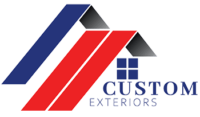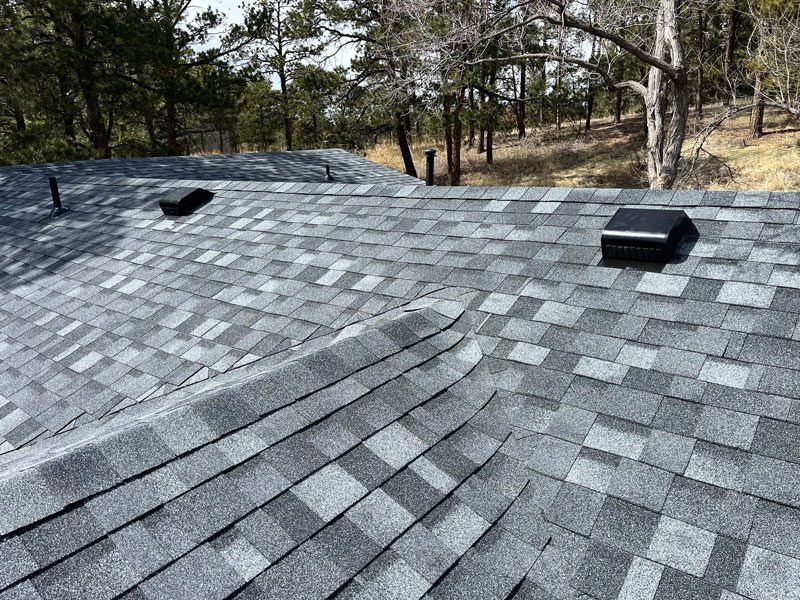Important tips for roof maintenance
Your roof is one of the most important systems of your home, and we aren’t just saying that because we are roofers. Your roof protects you and your family from Colorado’s extreme weather conditions year-round. Every season brings the potential for damage, from the strong hail storms we see in the summer to the heavy snow the winter occasionally brings. That doesn’t even consider the UV rays created by our 300+ days of sunshine. As local Colorado natives with decades of roofing experience, we have seen firsthand the impact our severe weather can have on our roofs.
If this experience has taught us anything, it is that regular roof maintenance is key to ensuring a long life and proper performance. Too often, we see roof leaks and other roof damage that could have been prevented if regular roof maintenance had been completed. From inspecting for damage to addressing minor repairs promptly, taking proactive steps can save you from costly, preventable damage. In this article, we’ll explore three essential tips for maintaining your roof, helping you extend its lifespan, and allowing it to protect your home for years to come.
"Proactive roof maintenance costs an average of only 14¢ per square foot versus an average of 25¢ per square foot for reactive roof maintenance. Additionally, proactively maintained roofs last an average of 21 years compared to a 13-year average lifespan for roofs that only receive reactive maintenance." ~ Buildings.com
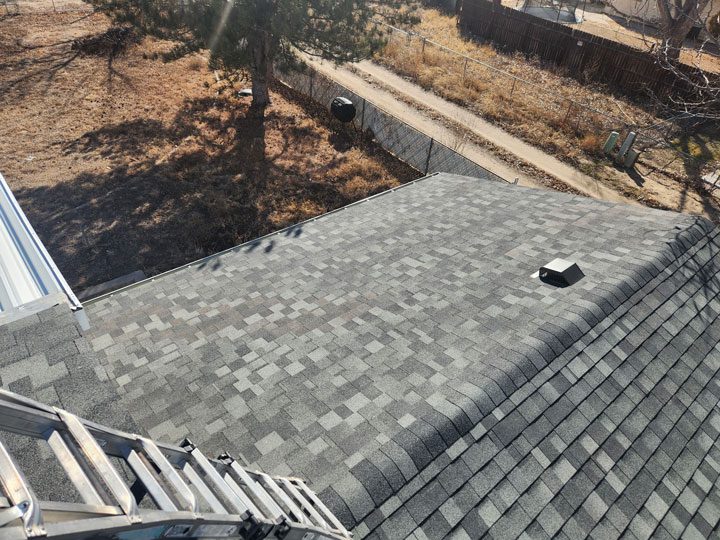
Regular roof inspections
Roof inspections should be conducted at least once or twice a year, ideally in the spring and fall. This schedule sits on the shoulders of Colorado’s severe weather season. By inspecting your roof before hail season and before the threat of standing snow on a roof in the winter, you should be able to catch any roof damage early and help prevent costly repairs. During a roof inspection, professional roofers thoroughly inspect the roof and all its components, including shingles or roofing materials, flashing, vents, gutters, and the overall structural integrity of your roof.
During your professional roof inspection, the roofer will look for signs of damage or wear during a roof inspection. This can include cracked or missing shingles, areas of discoloration or moss growth that could be signs of moisture problems, damaged flashings, sagging areas that could mean underlying structural issues, and debris buildup in gutters or on the roof surface.
Another item they check during a roof inspection is the condition of the caulking and seals surrounding vents, pipes, skylights, and other penetrations, looking for signs of potential leaks. They will then assess the overall ventilation system to ensure proper airflow and moisture control. Identifying and addressing roof damage quickly can prevent leaks and water damage – very expensive repairs.
Roof inspections by Custom Exteriors: Our roof inspection process
Roof inspections require a certain level of skill, knowledge, and physical abilities. Due to the inherent risks associated with roof inspections, we encourage our customers to use a professional for regular inspections.
However, if you are going to inspect your own roof, the steps below encompass the residential roof inspection process by Custom Exteriors. There are some simple things to look for that can catch potential issues early and ensure the roof remains in good condition.
Safety First:
A fall from your roof can result in serious injury and death. With that in mind, prioritize your safety over everything else. Roof inspections are typically not a DIY project. However, if you have the proper athletic ability, non-slip shoes, and safety equipment, including a safety harness, you may be able to complete your roof inspection. Make special considerations if your roof is steep or high, as falls can happen more easily.
If you are doing your own roof inspection, choose a sturdy ladder and practice standard ladder safety precautions when using it. Choose a day with good weather, little to no wind, and clear visibility. It’s always a good idea to have an assistant on the ground to “spot you” in case of an emergency.
Exterior Inspections:
You can DIY a roof inspection from the ground using binoculars or a remote control drone. This allows you to get a closer look at the condition of your roof from the safety of the ground. We start our inspections by walking around the exterior of your home and visually inspecting the roof from the ground. We look for visible signs of:
- Missing, Cracked, Or Curled Shingles
- Areas Of Discoloration
- Debris Build-up
During this time, we will also inspect other home systems. During times of severe weather, particularly hail, many exterior systems are prone to damage, including your windows, siding, gutters, and even your personal exterior property. Our HAAG-certified roofing inspectors will check your windows for signs of damage to the screens or the frames. (Screens are a great DIY project! Learn how to replace your screens with us!) They will look for signs of damage to your siding or paint, gutters, A/C unit, and your personal property.
Check Gutters and downspouts:
Inspect gutters and downspouts for clogs, debris accumulation, or signs of damage. When conducting a fall inspection, it’s a great idea to wait until your leaves have fallen to ensure your gutters are clear and can drain any heavy snow experienced during the winter. Clogged gutters can lead to ice dams. An ice dam freezes on the home’s eave with colder temperatures, sealing the melting water above and creating potential roof leaks. Your gutters must be clear and functioning properly before severe weather. The next section of the article covers gutter maintenance.
Inspect Flashing, Seals, Caulking, and interior penetrations:
We then check the flashings around the chimneys, vents, skylights, and other roof penetrations for signs of loose or damaged flashing, cracked seals and caulking, or gaps that could allow water infiltration.
It’s also important to check the vent pipes for any signs of damage, such as cracks, gaps, or deterioration. Check that vent pipe boots (the flashing around vent pipes) are in good condition and properly sealed to prevent water leaks.
Lastly, if safely possible, we inspect your attic for signs of water leaks, moisture, or mold growth. We look for water stains on the ceiling, damp insulation, or visible light through the roof boards, which could indicate roof damage. During this interior inspection, we can usually see the roof decking. Identifying if you have spaced roof decking and the insurance coverage to cover it before it is removed can prevent stress during your roof replacement.
Document any roof damage:
During each portion of our inspection, we take notes, photographs, and videos of any issues found during the roof inspection. This documentation can be helpful when discussing repairs with your homeowner’s insurance and roofing professionals.
Schedule a professional for roof repairs:
While some homeowners can perform a roof inspection themselves, it’s a good idea to schedule a professional roofer for any repairs. Having a professional inspection at least once a year or after severe weather, such as hail, is recommended. Professional roofers have the expertise and tools to conduct a thorough inspection and address any repairs immediately.
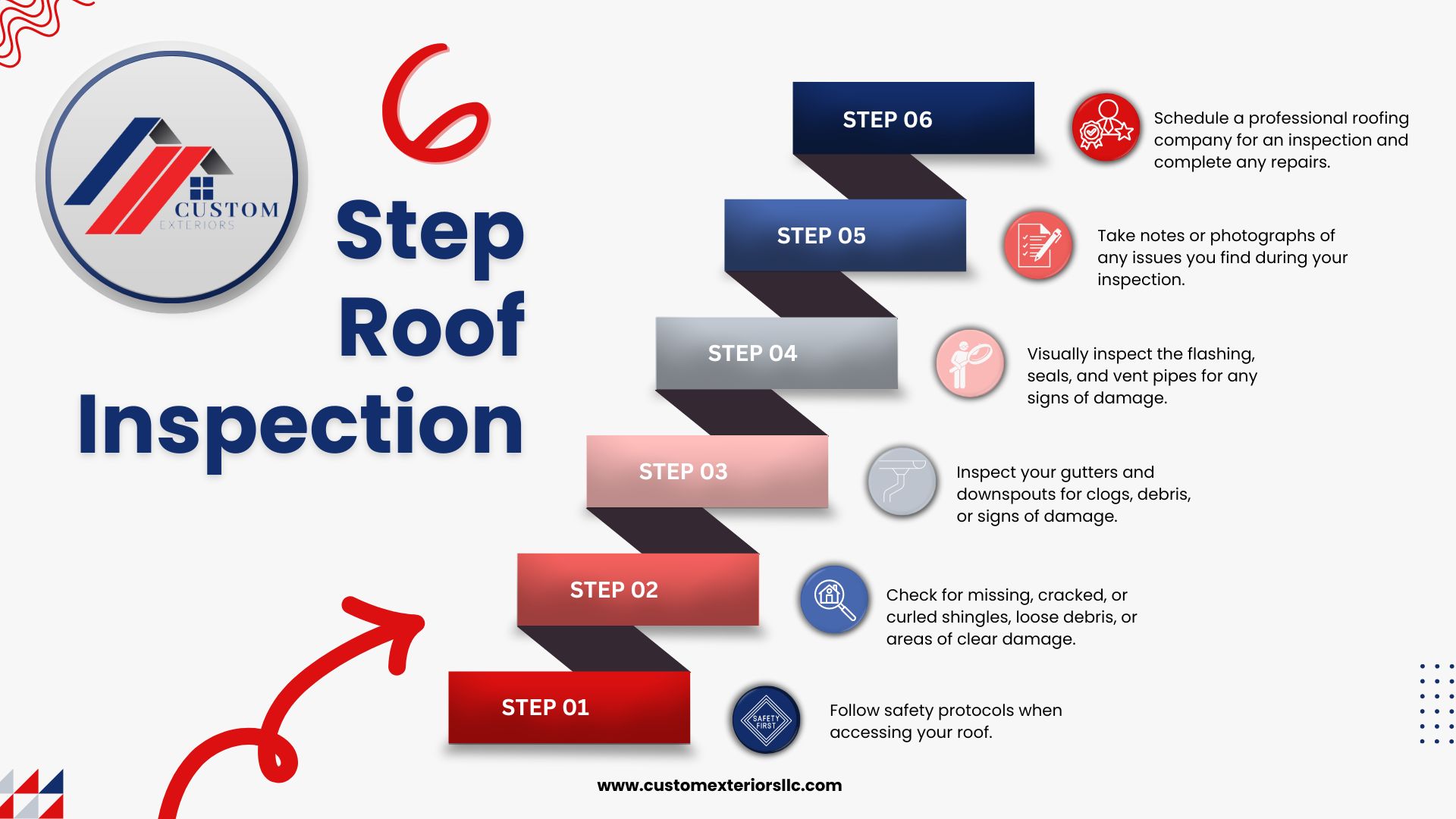
By regularly inspecting your roof and quickly addressing minor issues, you can increase its lifespan and avoid expensive repairs or replacements in the long run. If you’re ever unsure or uncomfortable inspecting your roof yourself, don’t hesitate to contact a qualified roofing professional for help. This is an excellent opportunity to build a working relationship with a trusted local professional in case you ever need a full roof replacement.
The role of gutter maintenance in proper roof care
Here is a step-by-step guide on gutter cleaning to get you started:
- Safety Precautions: Safety should be your first priority with all exterior maintenance. Before beginning, make sure you have the physical ability to complete the project safely. You should know and practice good ladder safety and always have someone spot you while using a ladder, especially if you’re working at a considerable height. If you doubt your ability to complete this project safely, it’s best to leave it to a professional with the experience and equipment to complete it safely and efficiently.
- Gather Your Tools: Before starting, gather work gloves, a bucket or trash bag, a gutter scoop or trowel, a garden hose with a spray nozzle, and safety glasses. You will also need a sturdy ladder placed on stable ground and extended sufficiently to reach past the gutters comfortably.
- Start At The Downspout: Begin near the downspout and work your way along the length of the gutter. Use the scoop or trowel to remove leaves, twigs, and debris from the gutter channel. Place the debris in your bucket or trash bag.
- Clear Blockages: If you find any clogs or obstructions in the gutter or downspout, use the gutter scoop, a plumber’s snake, or a garden hose to dislodge and remove the blockage. Once you have cleared the blockage, test that the water can flow freely through the downspout.
- Flush The Gutters: Once you’ve cleared the debris, use a garden hose with a spray nozzle to flush out the gutters. Start at the end farthest from the downspout and work your way towards it. This helps wash away remaining debris and check for proper water flow.
- Check Downspouts And Extensions: Inspect the downspouts and extensions for any clogs or blockages. Use a hose to flush water through the downspout and ensure it drains away from your home’s foundation.
- Inspect The Gutters And Roof: While cleaning, inspect the gutters and roof for signs of damage or wear. Look for loose or damaged gutters, missing or damaged shingles, and any areas where water may be pooling or leaking.
- Dispose Of Debris: Avoid dumping debris near storm drains or in areas that could cause drainage problems. Dispose of the gutter debris responsibly.
- Schedule Regular Maintenance: To prevent future clogs and water damage, schedule regular gutter cleaning at least twice a year, preferably in the spring and fall. Consider whether gutter guards or screens reduce debris build-up and impact maintenance needs.
Following these steps can help ensure that your gutters remain clear and functional, protecting your home from water damage and maintaining the roof and exterior.
Find a Local roofing company you can trust and enjoy the benefits of proper roof maintenance.
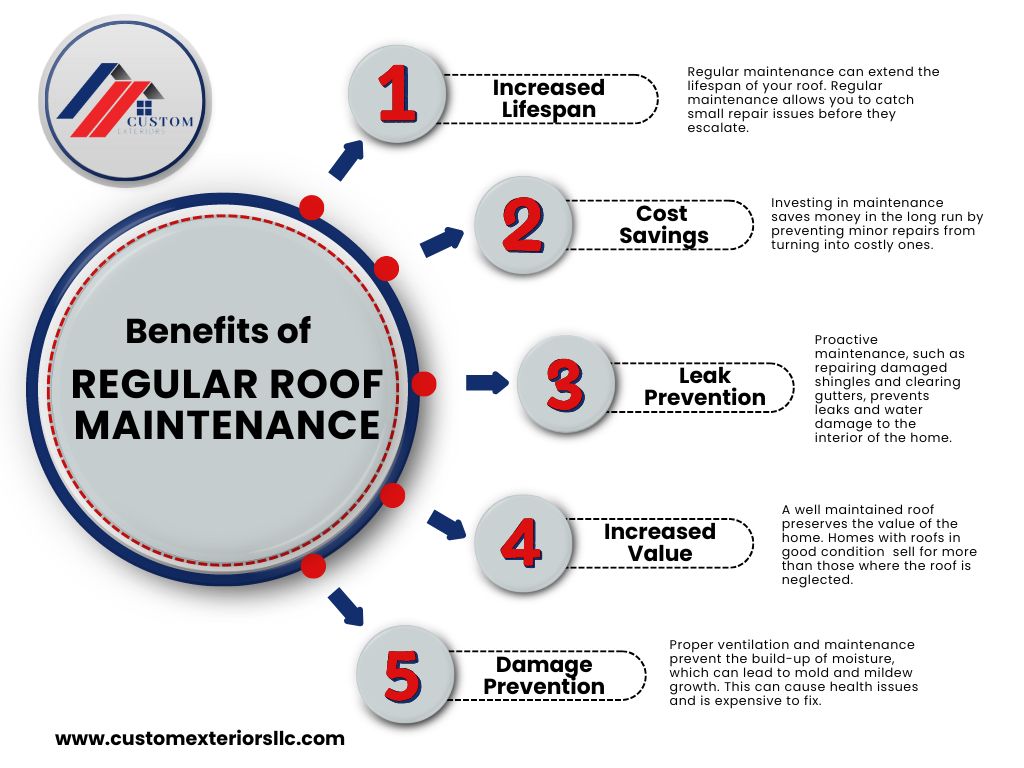
The benefits of regular roof maintenance can be both financial and aesthetic. However, you need a trustworthy roofing contractor to see any of these rewards. Using a professional roofing contractor for your roof maintenance, repairs, and inspections offers numerous benefits in addition to not having to do it yourself! Professional roofing contractors have the expertise, experience, and knowledge required to inspect and assess the condition of your roof. They can identify potential issues, such as damaged shingles, leaks, or structural weaknesses, which may not be apparent to an untrained eye.
Another key benefit of hiring a professional roofing contractor is the quality of workmanship and materials used. Contractors have access to high-quality roofing materials and tools that may not be readily available to homeowners. So, whether replacing damaged shingles, repairing flashing, or addressing ventilation issues, professional roofers will ensure your repairs are done correctly and up to industry standards. Local roofing professionals know building codes, regulations, and safety practices.
Establishing a relationship if you’re hit by hail and need a full roof replacement is also a great idea. Local roofing companies often provide warranties and guarantees on their work that you may not otherwise get. If issues arise after repairs or maintenance, reputable contractors will stand behind their work and are responsive to address any concerns.
Overall, partnering with a professional roofing contractor for your roof maintenance, repairs, and inspections is an investment in your roof’s long-term health and performance.
Contact Us Today
We Service and Support the Following Brands





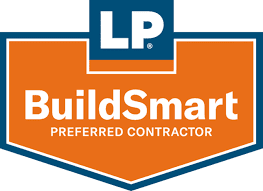



Contact
Custom Exteriors, LLC
2881 S. 31st Ave, Greeley, CO 80631
109 E. 17th St. Ste 5822, Cheyenne, WY 82001
102 S. Tejon St. Ste 1100, Colorado Springs, CO 80903
404 Broadway, Eagle CO 81631
Phone: 970-460-8714
Toll Free: 800-580-0131
Quick Links
© 2022 Custom Exteriors, LLC
